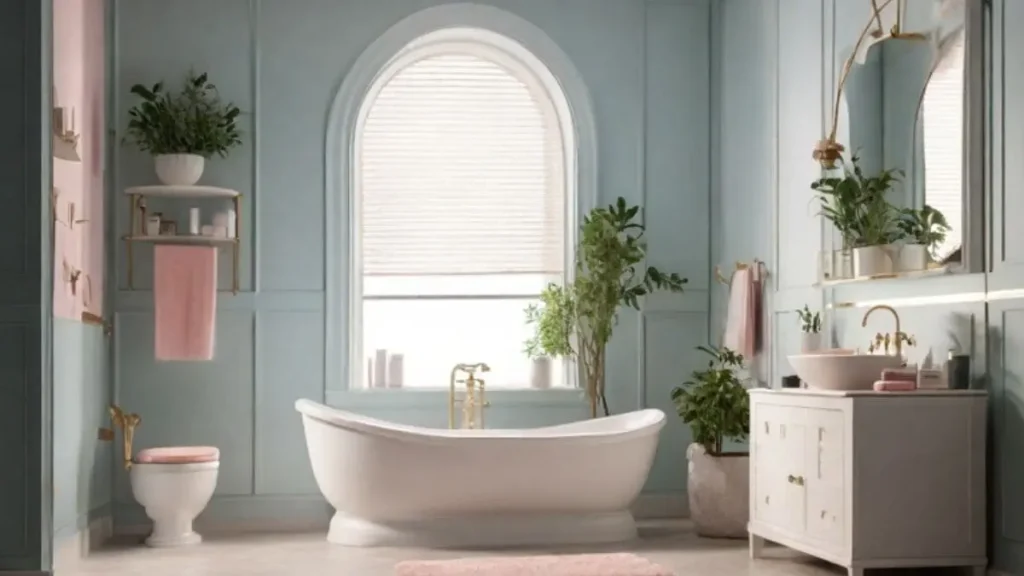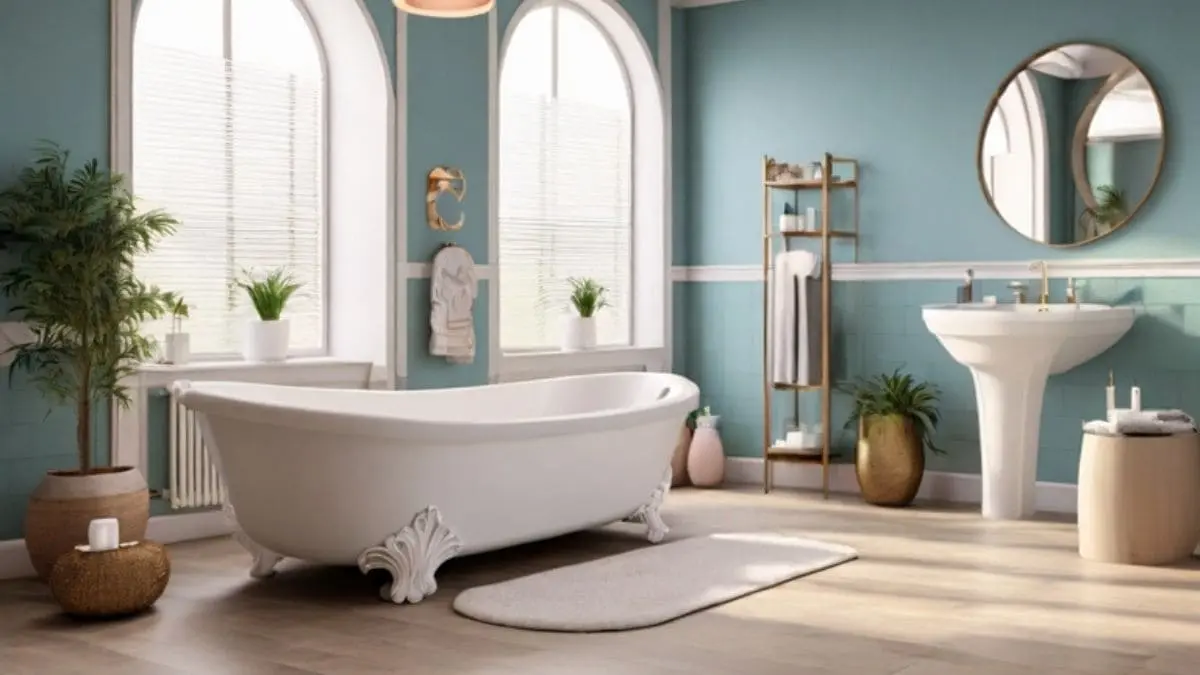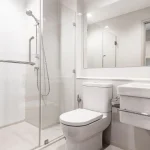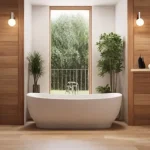When we think about home safety, we often overlook one of the most hazardous rooms in the house—the bathroom. It might surprise you to learn that over 230,000 people in the U.S. are injured in bathroom-related accidents each year.
From slippery floors to scalding hot water, bathrooms present unique risks that can lead to serious injuries, especially for the elderly, children, and those with mobility challenges.
This comprehensive guide will walk you through the essential bathroom safety features that can transform your bathroom into a safer space.
Whether you’re renovating your bathroom or simply looking to add a few safety upgrades, this resource will help you make informed decisions to protect yourself and your loved ones.
The Importance of Bathroom Safety

Statistical Insights
Bathroom accidents are more common than you might think. According to the Centers for Disease Control and Prevention (CDC), slips and falls in the bathroom are a leading cause of injuries, particularly among older adults. In fact, around 80% of bathroom injuries are caused by falls, with the most frequent incidents occurring in or around the shower or bathtub.
Common Hazards
Several common hazards make the bathroom a particularly risky place. Wet, slippery floors can easily lead to falls. Sharp edges on counters and fixtures increase the risk of injury, and hot water that’s too hot can cause burns. Even something as simple as stepping in and out of the bathtub can be dangerous without the proper precautions.
Target Audience
Bathroom safety features are especially critical for certain groups. For the elderly, who may have balance issues or reduced mobility, the bathroom can be a particularly dangerous place.
Children, who are often unaware of the potential hazards, are also at high risk. Additionally, individuals with disabilities or temporary injuries may find that a lack of safety features makes everyday tasks in the bathroom difficult or even impossible.
By installing the right safety features, you can make the bathroom a safer and more accessible space for everyone.
Essential Bathroom Safety Features

Non-Slip Flooring
Slippery floors are one of the leading causes of bathroom accidents, making non-slip flooring a must-have safety feature. Non-slip surfaces, like textured tiles or vinyl flooring, provide extra grip even when wet, reducing the likelihood of slips and falls.
Types: There are several non-slip flooring options to consider. Textured ceramic or porcelain tiles are popular choices, offering both style and safety. For those seeking a softer feel, vinyl flooring with a slip-resistant finish is another excellent option. Additionally, non-slip mats can be placed in the shower or bathtub to further enhance safety.
Installation Tips: When installing non-slip flooring, ensure the surface is level and securely attached to avoid creating tripping hazards. If you’re adding non-slip mats, make sure they have a rubber backing to keep them in place.
Grab Bars
Grab bars are essential for providing stability and support in the bathroom, particularly for those with limited mobility. They can be installed near the shower, bathtub, and toilet to help prevent falls.
Placement: The best places to install grab bars are where they’ll be most useful: alongside the bathtub, inside the shower, and next to the toilet. These bars should be positioned at a height that’s easy to reach and hold onto.
Materials and Design: Grab bars come in various materials, including stainless steel and durable plastic. Choose a design that matches your bathroom’s decor while ensuring it can support a person’s weight. Straight bars are the most common, but wave-shaped or angled designs can also be considered for added comfort and style.
Walk-In Tubs and Showers
For those with mobility issues, walk-in tubs and curbless showers are game-changers. These features allow users to enter and exit the bathing area without the need to step over a high edge, significantly reducing the risk of falls.
Features: Walk-in tubs often include built-in seating, handrails, and anti-slip surfaces, all designed with safety in mind. Curbless showers eliminate the need for a step, providing a smooth transition from the bathroom floor into the shower.
Installation Considerations: When installing a walk-in tub or curbless shower, ensure proper waterproofing to prevent leaks. It’s also important to verify that the entry door on a walk-in tub seals tightly to avoid water spills.
Temperature Control Devices
Scalding from hot water is a common but easily preventable bathroom injury. Temperature control devices like anti-scald valves and thermostatic controls can help regulate water temperature, ensuring it stays within a safe range.
Benefits: These devices prevent water from getting too hot, protecting both children and adults from burns. Thermostatic controls can maintain a consistent temperature even when water pressure fluctuates, adding an extra layer of safety.
Installation Tips: Anti-scald valves can be installed directly onto faucets or showerheads. For a more integrated solution, consider a thermostatic mixer, which requires professional installation but offers precise temperature control.
Adequate Lighting
Proper lighting is crucial for preventing accidents in the bathroom. Adequate lighting ensures that all areas of the bathroom are well-lit, reducing the risk of trips and falls.
Types of Lighting: Overhead lights are essential for general illumination, while task lighting around the mirror or sink helps with activities like shaving or applying makeup. Motion-sensor lights are a great addition, providing automatic illumination when someone enters the bathroom, especially useful at night.
Placement Tips: Position lights where they’ll provide the most coverage. Overhead lights should illuminate the entire bathroom, while task lighting should be focused on specific areas like the vanity or shower.
Raised Toilet Seats and Safety Frames
Raised toilet seats and safety frames make it easier for individuals with limited mobility to use the toilet without the risk of falling. These features provide added height and support, making sitting down and standing up less strenuous.
Benefits: Raised toilet seats reduce the distance one needs to lower themselves, while safety frames offer sturdy handholds to assist in standing. Both features help maintain independence and reduce the risk of injury.
Installation and Maintenance: Most raised toilet seats can be easily installed by securing them onto the existing toilet bowl. Safety frames typically attach to the toilet or can be freestanding. Regular checks should be done to ensure these items remain securely in place.
Slip-Resistant Mats and Rugs
In addition to non-slip flooring, slip-resistant mats and rugs provide an extra layer of protection in areas prone to water spills, like in front of the sink, shower, or bathtub.
Material Options: Opt for mats made from rubber or memory foam with a slip-resistant backing. These materials offer both comfort and safety, preventing the mat from sliding on wet floors.
Placement: Place mats in front of the bathtub, shower, and sink to catch water and provide a safe surface for stepping out. Ensure the mats are large enough to cover the necessary area but not so large that they create tripping hazards.
Recommended: Common Mistakes in Bathroom Remodeling
Additional Safety Considerations
Accessible Storage Solutions
Clutter can be a hidden danger in the bathroom, leading to trips and falls. Accessible storage solutions help keep the bathroom organized and free of hazards.
Ideas: Consider wall-mounted cabinets or shelving units to keep items off the floor. Pull-out drawers under the sink can provide easy access to frequently used items. For smaller bathrooms, over-the-toilet storage racks or corner shelves can maximize space without adding clutter.
Child Safety Features
Children are particularly vulnerable to bathroom accidents, so it’s important to incorporate childproofing features to keep them safe.
Tips: Install faucet covers to prevent burns from hot water, and use toilet locks to avoid accidental drowning. Ensure that all cleaning products and medications are stored in childproof cabinets or high shelves, out of reach of little hands.
Emergency Response Features
In the event of an accident, quick access to help can be lifesaving. Emergency response features like panic buttons or pull cords should be considered in bathrooms used by individuals with health concerns or mobility issues.
Installation Tips: Panic buttons can be installed near the toilet, shower, or bathtub, places where accidents are most likely to occur. Choose systems that connect to a monitoring service or that can alert someone in the home immediately.
Expert Insights and Recommendations

Professional Advice on Safety Upgrades
When it comes to bathroom safety, consulting with professionals can provide valuable insights that go beyond basic safety measures. Experts in home remodeling and aging-in-place design often emphasize the importance of customizing safety features to meet the specific needs of the household.
Key Takeaways:
- Personalized Solutions: A one-size-fits-all approach doesn’t work when it comes to bathroom safety. Professionals recommend assessing the unique needs of the bathroom’s primary users.
For example, if the bathroom is mainly used by an elderly person, grab bars and non-slip flooring might be prioritized. For families with young children, anti-scald devices and childproof storage solutions might take precedence.
- Quality Over Cost: Experts often stress the importance of investing in high-quality safety products. Cheaper alternatives might save money upfront but could wear out quickly or fail when needed most. Professionals suggest choosing products that are durable, reliable, and come with warranties or guarantees.
- Future-Proofing: Even if you’re not currently facing mobility issues, experts recommend considering safety features that can accommodate future needs. Aging-in-place designs, such as walk-in tubs or curbless showers, can add value to your home and provide peace of mind for years to come.
Common Mistakes to Avoid
Avoiding common pitfalls can make the difference between a safe bathroom and one that still poses risks. Experts highlight some of the most frequent mistakes homeowners make when implementing bathroom safety features:
Neglecting Professional Installation: Some safety features, like grab bars and walk-in tubs, require professional installation to ensure they’re secure and function properly. DIY installations might seem cost-effective but could lead to issues if not done correctly.
Overlooking Small Details: Small things, like improper lighting or failing to secure mats, can lead to accidents. Experts suggest paying attention to the details, ensuring that every aspect of the bathroom contributes to overall safety.
Ignoring Maintenance: Safety features need to be regularly checked and maintained. For example, non-slip mats should be cleaned to prevent mold, and grab bars should be checked periodically to ensure they remain securely attached.
Recommendations from Industry Leaders
Industry leaders in bathroom safety and home remodeling often recommend specific products and brands known for their quality and effectiveness. Here are some commonly recommended items:
- Moen Grab Bars: Known for their durability and sleek design, Moen grab bars are a favorite among professionals for adding both safety and style to the bathroom.
- Delta Temp2O Showers: These showers come with built-in temperature control, displaying the water temperature digitally to prevent scalding—a highly recommended feature for homes with children or elderly residents.
- Safe Step Walk-In Tubs: These tubs are designed with safety in mind, offering features like anti-slip surfaces, built-in seating, and easy-to-use controls, making them a top choice for aging-in-place designs.
Cost and Budget Considerations
Estimating Costs for Safety Upgrades
When planning to enhance bathroom safety, understanding the potential costs involved is crucial. The price of safety upgrades can vary widely depending on the features you choose, the quality of materials, and whether you opt for professional installation.
Average Costs
- Non-Slip Flooring: The cost for non-slip flooring can range from $1 to $10 per square foot, depending on the material. Ceramic or porcelain tiles typically cost between $5 to $10 per square foot, while vinyl options are more budget-friendly at around $1 to $3 per square foot.
- Grab Bars: Installing grab bars can cost anywhere from $20 to $200 per bar, depending on the material and design. Professional installation might add another $100 to $300, depending on the complexity of the job.
- Walk-In Tubs: Walk-in tubs are a significant investment, with prices ranging from $2,500 to $10,000 or more, including installation. The cost can vary depending on the tub’s features, such as hydrotherapy jets or heated surfaces.
- Temperature Control Devices: Anti-scald devices and thermostatic controls typically cost between $50 to $200, with installation fees ranging from $100 to $500, depending on the complexity.
Budgeting Tips
Managing: costs while ensuring safety can be challenging, but with careful planning, it’s possible to create a safe bathroom without breaking the bank.
Prioritize Needs: Start by identifying the most critical safety features based on your specific needs. For example, if you’re most concerned about slips and falls, invest first in non-slip flooring and grab bars.
Seek Out Discounts: Look for sales or discounts on safety products. Many home improvement stores offer promotions on items like grab bars, non-slip flooring, and lighting fixtures, especially during home renovation seasons.
DIY Where Possible: While some safety features require professional installation, others, like non-slip mats or faucet covers, can be installed easily by yourself, saving on labor costs.
Consider Long-Term Value: Some safety upgrades, such as walk-in tubs or curbless showers, might seem expensive upfront but can add significant value to your home and provide long-term benefits. Consider these as investments rather than costs.
Cost-Effective Alternatives
If your budget is tight, there are cost-effective alternatives that can still enhance bathroom safety.
Inexpensive Solutions: Instead of replacing the entire floor, consider adding non-slip mats in key areas like the shower, bathtub, and sink. For grab bars, adhesive models that attach to the wall without screws can be a temporary solution, though they may not be as sturdy as professionally installed ones.
Used or Refurbished Items: Some safety products, like walk-in tubs or grab bars, may be available in gently used or refurbished condition at a lower price. Be sure to check their condition and any warranties before purchasing.
Financial Assistance: For seniors or individuals with disabilities, there may be financial assistance programs available to help cover the cost of bathroom safety upgrades. Check with local government agencies or non-profit organizations to see if you qualify.
Conclusion
Incorporating bathroom safety features into your home is a crucial step toward creating a safer and more secure environment for everyone. By investing in essential elements like grab bars, non-slip flooring, and proper lighting, you not only reduce the risk of accidents but also enhance the overall comfort and functionality of your bathroom.
This guide has provided an overview of key safety features, expert insights, and practical budgeting tips to help you make informed decisions.
Whether you’re upgrading your bathroom for elderly family members, children, or simply for added peace of mind, these safety measures are designed to meet various needs and preferences.
Remember, safety in the bathroom is about more than just adding features—it’s about creating a space where everyone can feel confident and secure.
Make the commitment today to enhance your bathroom’s safety. The result will be a more secure, comfortable, and worry-free space for everyone who uses it.



